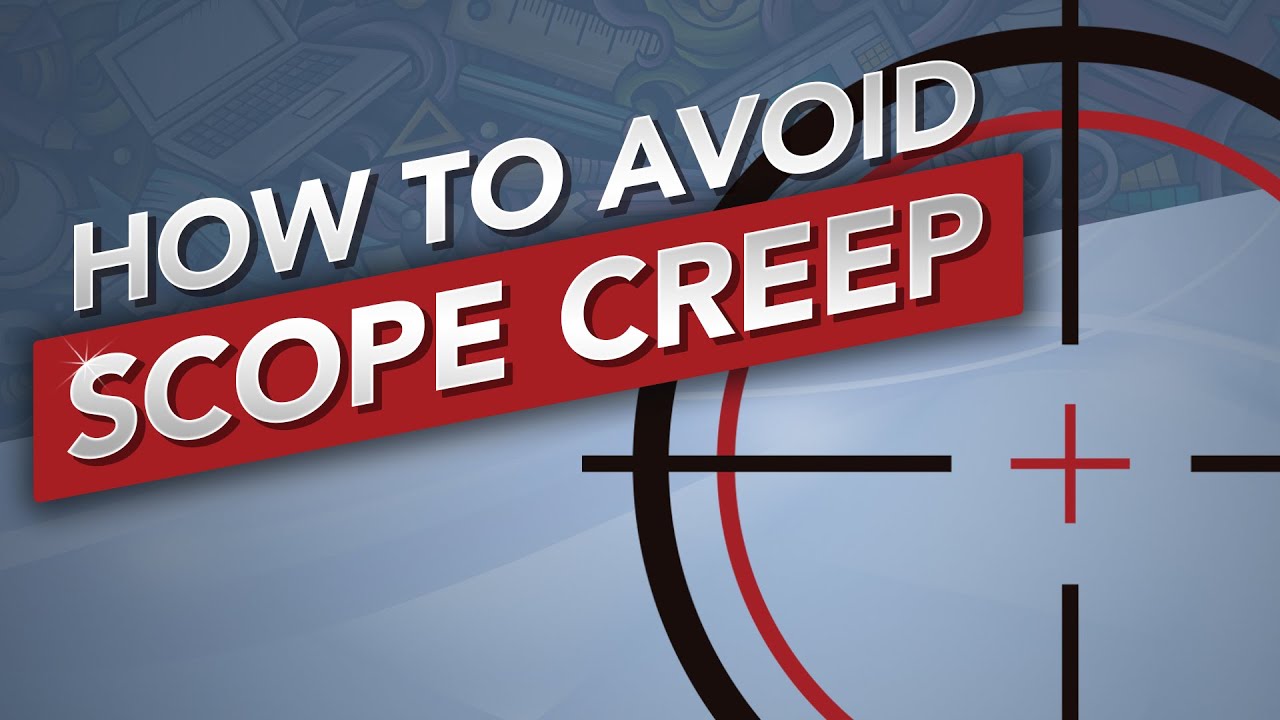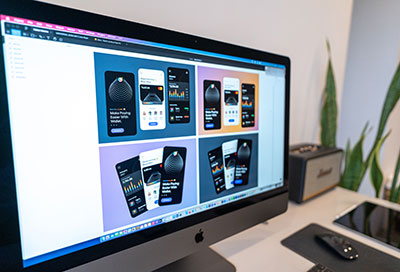
Scope creep is a common problem in many industries, but it can be especially harmful to graphic designers. This problem can cause projects to drag on for months or even years and can end up costing the designer a lot of money. In this blog post, we will discuss what scope creep is and how to avoid it. We will also discuss some project management techniques that can help keep your projects on track.
Introduction to Scope Creep

What Is Scope Creep?
First, you need to know what scope creep is. This is an important factor in any freelance or independent contractor relationship. It’s not some weirdo in the corner or me with my crazy hair. It’s actually a customer demanding more and more things. The simplest way I can explain it is that scope creep refers to changes and continuous growth within a project after it starts. Let me give you a quick example by telling you a quick story.
We had a client that we did a video project for, specifically an explainer video. One of the first stages, after we do our discovery meeting, is to actually do storyboards. So we storyboarded the whole thing out and had a good idea of where we were going to go. Then, I wrote the script. I assumed that the client was going to see the script and say, “Okay, cool. Let’s just change this and we’re good to go.”
Lo and behold, the customer is a marketer as well. He wanted to change that script and he changed it to the point where now, instead of a minute and 10 seconds, the video is now a minute and 50 seconds. Well, every second of that video adds cost and time and it takes out of my bottom line – it reduces the profit that I make in that video. A lot of people will do this intentionally and sometimes unintentionally, and it will cost you a lot of money.
Scope Creep Costs You Money
You’re going to be very careful about scope creep; it can be very damaging to your business, but the key is then this one specifically: in this case, in this story, I did not want to increase the price on him because it was about the long term, and the fact that I was going to be doing tons of these videos. But these can happen within every single design project, and it’s something that you really need to be aware of.
So that just leads me to my first question: have you ever dealt with scope creep, even if you’re a new designer? I know you know what this is like – I know you know the pain of having to deal with constant revisions and changes, like the design project that just never ends. It just keeps going on and on. I’ve dealt with more of those than I’d even like to admit, to be honest with you. Scope creep is a common thing in the graphic design industry and most businesses teach it within project management training. This is something I wanted to teach you guys, just to get a better handle on it. I’m working on improving these systems and processes myself within my business.
How Do You Prevent Scope Creep?

Step One: Create A Clear Agreement
In my world, you need to have a crystal clear contract or agreement, or a clear proposal of everything that your project includes and everything that it doesn’t include. You have to put the details in of what you expect from the client and what they should expect from you, such as how many revisions are included. This is a really important part of your scope. What’s the turnaround time? How many changes? How many total revisions?
Also, define how many minor revisions they get because minor revisions and major revisions are two completely different things. You want to separate those things and put together clear terms and conditions so the scope does not creep on you and become something way bigger. It’s going to be something that’s your foundation that you can always go back to and say, “Hey look, this is not in the scope of work that we talked about. I’d be happy to do this for you, so here’s an invoice for that or here’s a proposal for that,” and then they can choose to change it or not—it’s on them, so it’s not on you.
Step Two: Review Agreement One-on-One
Step two is to go through these agreements, proposals, terms, and conditions, and all this stuff with them one-on-one on the phone, on zoom, or in-person–however you have to do it. The format doesn’t matter as long as it’s a one-on-one meeting. This is going to help you stay out of that endless loop of changes, those endless loops of revisions, and it’s going to keep you from losing clients. Having this done face-to-face with your client and making sure that they understand every single piece of it is essential. If you don’t, it will cost you business.
Even when it comes to hosting, when we build websites, we had issues in the past where the client goes, “Well, I didn’t know I had to pay for hosting.” You may be thinking, ‘Well, every website is hosted. It should be common sense,’ but common sense is not common. So I really want you to take that to heart: just because it’s common to you and you know it because you’re in the industry doesn’t mean your customer understands it.
So take the time to slow down your process a little bit. That’s why you need to charge more and that’s why you can actually have more value and bring more value to the table because you truly slow the process down and actually give them a deeper understanding of how this is going to work, and this is what the customer wants at the end of the day. So this is really important – make sure you go through it with them one-on-one.
Step Three: Prioritize Good Communication

Why Communication Matters
This is going to be really important, you’re going to have to step out of your comfort zone. It’s really, really, really important and I need to stress this to you. So, being able to have those two agreements or having those two conversations before this conversation happens is what’s going to be able to make sure that you can bring it back full circle and say:
“Hey remember the very beginning when we laid out the proposal and I went through everything that this was going to include?”
“Yeah! Yeah, I remember that!”
“Well, this is exactly why I do that; it’s because situations like this happen.”
So I just want you to approach these situations, not close-minded, not just saying no, but giving them the option to rectify it by saying, “I’d be happy to do this but it’s going to be x dollar amount more. I can go ahead and send you the invoice if you’re ready to go ahead and have me do that.” And if they say they don’t want to do that then respectfully decline and say no thank you, but you need to consider this if you say no. There is the potential risk that you could lose that client.
What If I Say No?
They could say “You know what I’m not going to deal with this person,” and that can be a good thing or it could be a bad thing. Either way, it’s something you need to take into consideration if you want to build a relationship with this person long-term. But if they’re not being understanding of that, you may want to just cut ties with them because that long-term relationship may not even be a real thing to you – it may be something they said they want, but that doesn’t always mean that it’s true. You need to make sure you have your stuff backed up with a solid agreement, including solid contract terms and conditions to cover your tail. This is really important for the client to know, and you have to be able to hold your end of the bargain.
Step Four: Make Your Boundaries Clear
The last step I want to share about scope creep is defining boundaries. If someone keeps pushing and is repetitively doing this to you on a regular basis, you need to set that boundary line and tell them you can’t do it anymore. If they continue to repeat it, that’s when I would be going out there personally and trying to find a new client. You just need to make sure that you are very fair, very honest, and very clear about what you expect and what your boundaries are.
Client communication is key when it comes to scope creep. You need to make sure that everyone is on the same page from the beginning, which includes setting realistic expectations. This way no one will be surprised when the project is completed.
Final Thoughts on Scope Creep

Speaking of help in your future projects, make sure you join us at the Instagraphics Pro Network on Facebook. I’d love to see you there; we have some great stuff coming up, and it’s an excellent place to get feedback on all aspects of your creative business. Thank you guys so much for reading, and be sure to check out our other articles about how to find great clients that don’t try to increase the scope of your work without increasing the rate. I’m Adrian Boysel, and as always, keep looking up!
